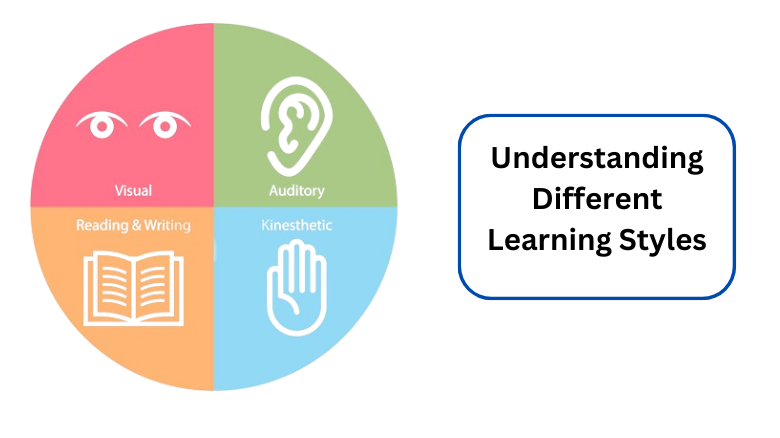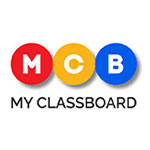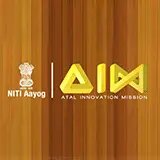Introduction:
In the intricate tapestry of education, one size rarely fits all. Just as every individual possesses a unique fingerprint, each of us also has a distinctive way of learning. Understanding these learning styles isn't merely an academic pursuit; it's the cornerstone of effective teaching and learning. In this blog, we'll delve into the essence of learning styles, explore their types, and uncover how to identify your own. Moreover, we'll unravel the significance of accommodating diverse learning styles in designing more effective educational programs.
Definition of Learning Styles:
Learning styles encapsulate the diverse approaches individuals employ to assimilate, process, and retain information. These styles encompass a spectrum of preferences, from visual and auditory to kinesthetic and beyond. At its core, understanding learning styles involves recognizing that learners aren't uniform entities but rather multifaceted individuals with unique cognitive patterns.
Types of Learning Styles:
While different models may categorise learning styles in various ways, one commonly referenced framework identifies seven main types of learning styles:
1.Visual Learning:
Visual learners prefer to learn through images, diagrams, charts, and other visual aids. They grasp information more effectively when presented in a visual format.
2.Auditory Learning:
Auditory learners thrive when information is presented orally. They prefer lectures, discussions, audiobooks, and verbal instructions, relying on their strong auditory processing skills to understand concepts.
3.Kinesthetic Learning:
Kinesthetic learners learn best through hands-on experiences and physical activities. They prefer to engage in experiments, simulations, role-playing, and other interactive activities that involve movement and tactile sensations.
4.Reading/Writing Learning:
Reading/writing learners excel when information is presented in written form. They prefer textbooks, written instructions, note-taking, and reading assignments, finding clarity and comprehension through written words.
5.Logical/Mathematical Learning:
Logical/mathematical learners are adept at reasoning, logic, and problem-solving. They prefer structured learning environments, appreciate patterns and systems, and excel in subjects like mathematics, science, and logic-based disciplines.
6.Social Learning:
Social learners thrive in collaborative settings and through interaction with others. They prefer group discussions, cooperative learning activities, peer teaching, and teamwork, finding motivation and comprehension through social engagement.
7.Solitary Learning:
Solitary learners prefer to work independently and in solitude. They excel when given space and autonomy to explore materials at their own pace, preferring self-directed study, individual research, and reflective practices.
These seven learning styles encompass a spectrum of preferences and strengths, highlighting the diverse ways in which individuals process and retain information. Understanding these styles can inform teaching strategies and facilitate more personalised and effective learning experiences.
How to Understand Your Learning Style:
Identifying your learning style is akin to unlocking a personalized roadmap to academic success. Here's how you can discern your preferred mode of learning:
1.Self-Reflection:
Reflect on your past learning experiences. Consider which methods or environments facilitated your understanding and retention of information.
2.Learning Assessments:
Engage in learning style assessments or quizzes readily available online. These tools often provide insights into your dominant learning style and strategies to leverage it effectively.
3.Experimentation:
Experiment with various learning techniques. Explore visual aids, auditory resources, hands-on activities, and textual materials to gauge which resonates most profoundly with your learning preferences.
Importance of Learning Styles:
Understanding learning styles isn't a mere pedagogical curiosity; it's a transformative paradigm that fosters inclusive and effective learning environments. Here's why learning styles matter:
1.Personalized Learning:
By catering to diverse learning styles, educators can personalise instruction, ensuring that each student receives tailored support aligned with their individual preferences and strengths.
2.Enhanced Engagement:
When learning experiences align with students' preferred styles, engagement soars. Students become more motivated, attentive, and invested in their educational journey, leading to deeper learning outcomes.
3.Improved Retention:
Matching instructional strategies to learners' preferred styles enhances information retention. Students are more likely to remember and apply concepts when they're presented in a manner congruent with their cognitive preferences.
4.Inclusive Education:
Recognizing and accommodating diverse learning styles promotes inclusivity in education. It empowers students with varying abilities, backgrounds, and learning profiles to thrive in the classroom, fostering a culture of equity and accessibility.
Designing Better Learning Programs:
Armed with insights into different learning styles, educators can revolutionise the design of learning programs. Here are some strategies to create more effective educational experiences:
1.Multi-Modal Instruction:
Integrate multiple modes of instruction within lesson plans to cater to diverse learning styles. Incorporate visual aids, auditory cues, hands-on activities, and textual materials to provide a well-rounded learning experience.
2.Flexible Learning Environments:
Foster flexible learning environments that accommodate various learning preferences. Create spaces where students can engage in collaborative group work, independent exploration, and kinesthetic activities.
3.Individualised Support:
Offer individualised support to students based on their learning styles. Provide additional resources, alternative assessments, and personalised learning plans to address the unique needs of each learner.
4.Ongoing Assessment and Adaptation:
Regularly assess student progress and adjust instructional strategies accordingly. Solicit feedback from students to understand their preferences and tailor learning experiences to optimise engagement and comprehension.
Conclusion:
In the mosaic of education, understanding learning styles isn't a mere footnote; it's a central tenet that shapes the fabric of effective teaching and learning. By embracing the diversity of learning preferences, educators can unlock the full potential of every student, designing learning programs that inspire, empower, and elevate. So, let's embark on this journey of discovery, harnessing the power of learning styles to illuminate the path to academic excellence for all.
With this comprehensive guide, you're equipped to navigate the labyrinth of learning styles and pave the way for transformative educational experiences. Let's embark on this journey together, championing inclusivity, innovation, and excellence in education.
What sets Vikas The Concept School apart is its commitment to implementing diverse learning styles. By recognizing and accommodating the individual preferences of students, the school fosters an inclusive environment where every learner can thrive. Through a multi-modal approach to instruction, including visual, auditory, kinesthetic, and reading/writing methods, the school ensures that each student receives personalised support tailored to their unique strengths and needs. This dedication to diverse learning styles not only enhances student engagement and comprehension but also cultivates a culture of inclusivity and academic excellence that sets Vikas The Concept School apart from the rest.
If you're seeking an educational environment where your child can truly excel, look no further than Vikas The Concept School. With our unwavering commitment to implement diverse learning styles, we ensure that every student has the opportunity to shine. Join us at Vikas The Concept School and empower your child to become a champion learner. Also, visit Our Website https://vikasconcept.com/ and book your admissions now.
Together, we'll unlock their full potential, nurturing their individual strengths and fostering a love for learning that lasts a lifetime. Don't wait another moment to invest in your child's future. Enrol them at Vikas The Concept School today and watch them soar!















